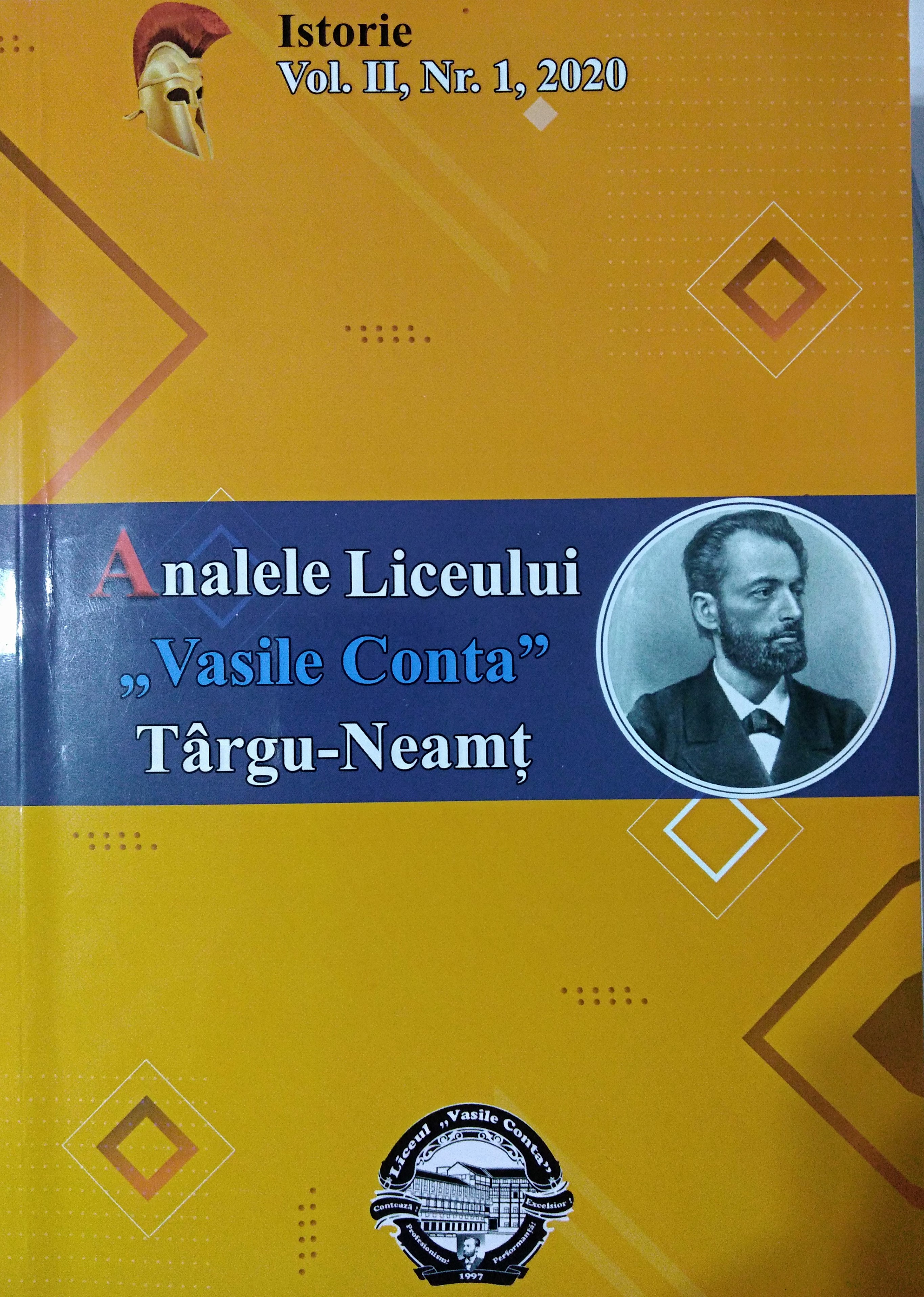Pomelnicul Mănăstirii Bistrița „o altfel de istorie a Moldovei”
POMELNICUL BISTRIȚA MONASTERY „A DIFFERENT HISTORY OF MOLDOVA”
Author(s): Diana Sîrbu, Paul Iaută, Rareș BârsanSubject(s): Cultural history, Local History / Microhistory
Published by: Liceul Vasile Conta Târgu-Neamț
Keywords: Bistrița monastery; diptych; the royal necropolis;
Summary/Abstract: Bistrița Monastery occupies a special place among the hearths of Orthodox faith andRomanian culture that ennoble the past of this country, being among the oldest buildings the voivodesfounded, sheltering lordly bones and unforgettable deeds from the history and spiritual life of ourpeople. According to tradition, the beginnings of the monastic community in the hearth of Bistrita inNeamţ date back to the reign of Petru I Mușat, towards the end of the 14th century, endowed byAlexandru cel Bun, Ștefan cel Mare, Petru Rareș. After the Law of Secularization of Wealth wasintroduced in December 1863, the "era of worship" of Bistrița Monastery ended, opening a slow butnecessary action of rebirth and reconstruction due to which the ancient Musatine foundation becameagain the hearth of culture and of the old Orthodox life, thoroughly integrated in the history of thecountry and in the spiritual life of the Romanian people. During the First World War, a field hospitaloperated in Bistrita, then it was transformed into an orphanage. In 1948, the Bistriţa treasury left forthe National Bank, but only part of it reached Bucharest, the other part getting lost on the way. Thecommunist period was also marked by a real general restoration of the monastery and after 1986 and,especially, after the Revolution, the monastery regained its true mission of monastic settlement. BistrițaMonastery was a strong and fruitful hearth of Romanian spirituality and medieval culture.
Journal: Analele Liceului „Vasile Conta” Târgu-Neamț, seria Istorie
- Issue Year: 2/2020
- Issue No: 1
- Page Range: 248-257
- Page Count: 10
- Language: Romanian

